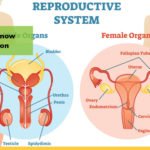What is a hysterectomy?
A hysterectomy is a surgical procedure in which the uterus is removed. A total hysterectomy means that the uterus and cervix are removed. A hysterectomy may include removing the ovaries and fallopian tubes-that is called a salpingo-oophorectomy and frequently is performed along with a hysterectomy.
How is it performed?
Historically, hysterectomies have been performed either by making an incision in the abdomen or, if the uterus is not too large, an incision in the top of the vagina-a vaginal hysterectomy. When an incision is made in the abdomen, not only the skin but many other layers need to be cut and to heal. This produces a significant amount of post-operative pain and recovery time. It is actually the healing of the skin and other layers beneath it that accounts for most of the pain women experience after a hysterectomy, not the actual removal of the uterus. A vaginal hysterectomy reduces the pain of recovery, but can only be performed on women who have a relatively small uterus and have no other diseases or prior surgery that may have caused adhesions.
What is a laparoscopic hysterectomy?
Today, there are several surgical approaches that are far less invasive than a total abdominal hysterectomy, which is still widely performed. Using a laparoscope — a slender, fiber-optic tube equipped with a miniature camera, lights and surgical instruments — surgeons have the ability to see inside the abdomen and technical access to the uterus, ovaries and fallopian tubes without having to make a large incision. The surgery is completed utilizing only four tiny abdominal incisions less than one centimeter in length. Even a large uterus can be removed laparoscopically using this technique.
Figure (hysterectomy) Coagulation of round ligament Round ligament coagulation (detaching the connections of uterus) Coagulation of left infundibulo-pelvic ligamen Seperating the urinary bladder from uterus Coagulation of uterine vessels Detaching the uterus from vagina Uterus completely detached from vagina Pelvis after removal of uterus Suturing of vaginal vault After vault closure.
What are the advantages of Laparoscopic Hysterectomy?
A traditional open hysterectomy requires an abdominal incision of ten to fifteen centimeters compared to the small incisions made for laparoscopic hysterectomy.
Laparoscopy allows excellent visualisation (exposure) of organs.
Post surgically, patients have a much quicker recovery They report less pain, minimal post-surgical use of painkillers and a faster recovery time than women undergoing abdominal hysterectomies, who usually require a three to four day hospitalisation and a lengthy recovery time of usually six to eight weeks.
Small incisions with less chances of wound infection or/and breakdown.
Better cosmetic results
Less chances of hernia formation
Significantly less adhesion formation and scarring compared to abdominal hysterectomy.
Who can undergo Laparoscopic Hysterectomy?
Usually all the patients who have been advised for abdominal hysterectomy can undergo laparoscopic hysterectomy.
Can a person who has undergone operations in the past go in for laparoscopic hysterectomy?
Yes, a patient who has undergone operations in the past can undergo this procedure and if there are adhesions because of previous operations, they can be removed along with the laparoscopic hysterectomy, in the same sitting.
Can associated ovarian, tubal or uterine disease all these be treated in the same operation laparoscopically?
Yes, it is very much possible to treat/remove the ovaries and tubes while carrying out laparoscopic hysterectomy.
Do I need any special investigations for laparoscopic hysterectomy?
The usual routine tests are required as for any other operative procedure and no special investigation is required for laparoscopic hysterectomy.
Can a person having disease like diabetes or high blood pressure undergo this procedure?
Yes, after controlling the diabetes and high blood pressure, a person can undergo this procedure, and in fact the advantages of lesser chances of infection and early recovery are much beneficial for them.
Where should one get the laparoscopic hysterectomy done?
It is an advanced laparoscopic surgery procedure, and it’s always advisable to get it done in an advanced care institution, where the whole set of equipment is present along with its complete backup facilities.
Under what type of anaesthesia is it carried out?
This procedure is carried out under general anaesthesia
After how many days can I go back home after the surgery?
On an average the total hospital stay is for 24-48 hours, after which you can go back home.
What are the usual precautions I have to take after I reach home
On an average, two hours after lunch and eight hours rest after dinner is what is usually recommended. You can climb stairs for two to three floors slowly, walk half to one km slowly and carry out sedentary work at home without much difficulty. One can have daily bath.
When do I see the doctor again after the operation?
Routinely, the patient is called after 4 weeks for an internal checkup.
When can I resume my normal activity / go back to work?
After one week, you can resume normal activity like walking, cooking, driving, sitting in front of the computers for 4-6 hrs etc. Intercourse, strenuous exercise, lifting of heavy weights, swimming etc. has to be avoided for a period of six weeks.







